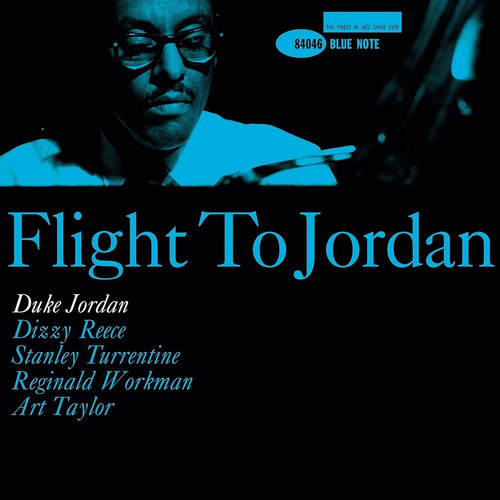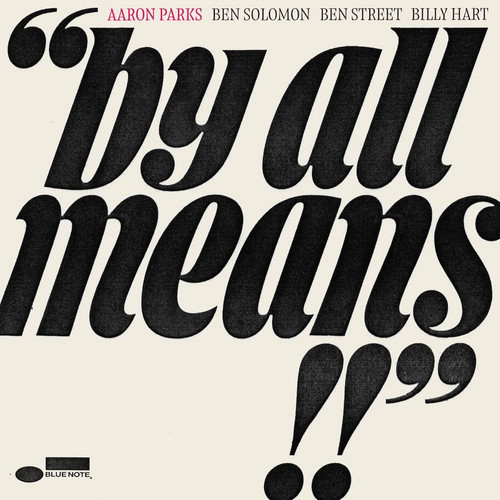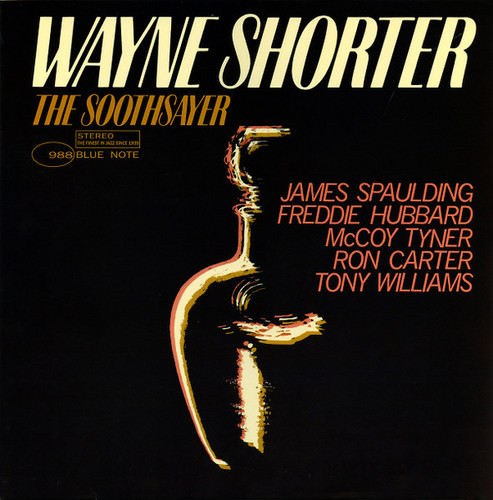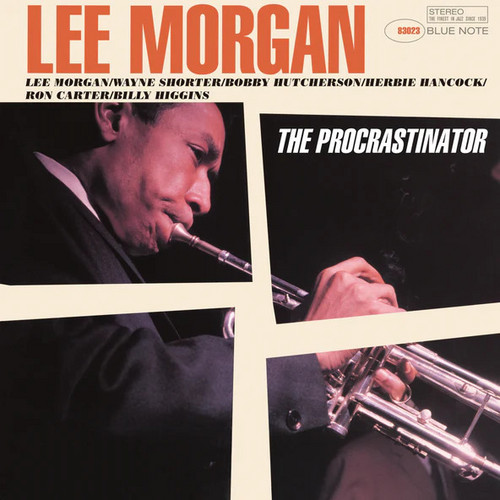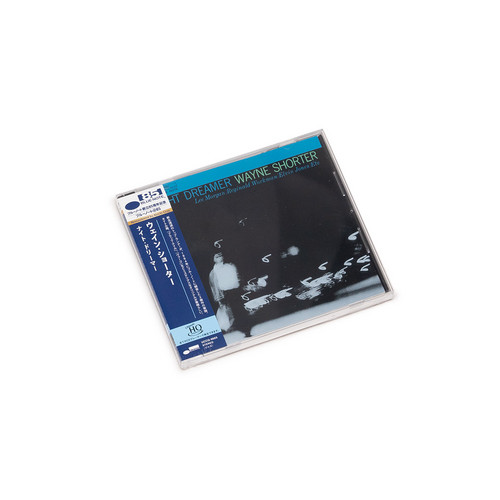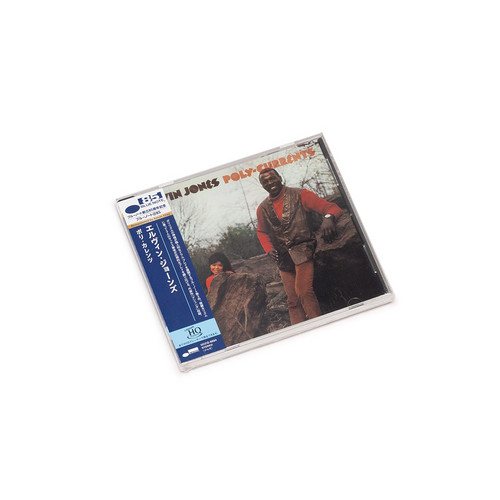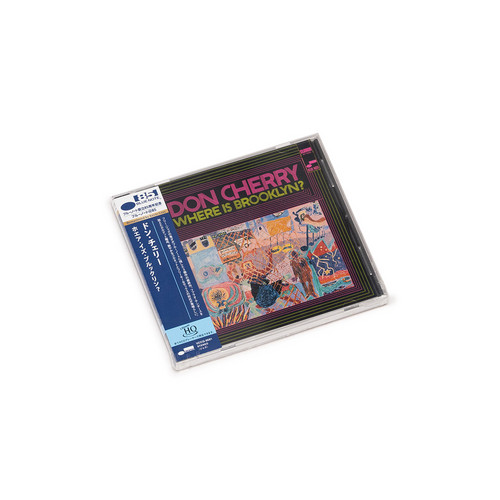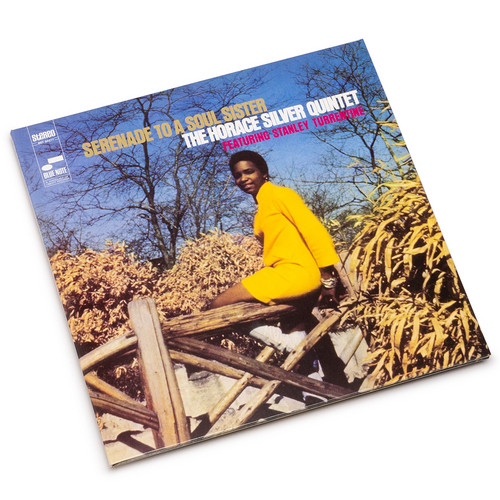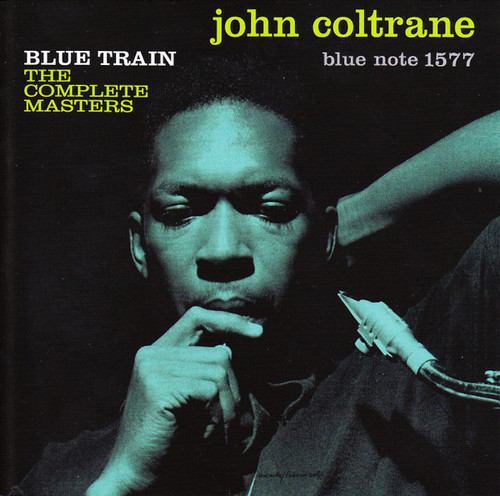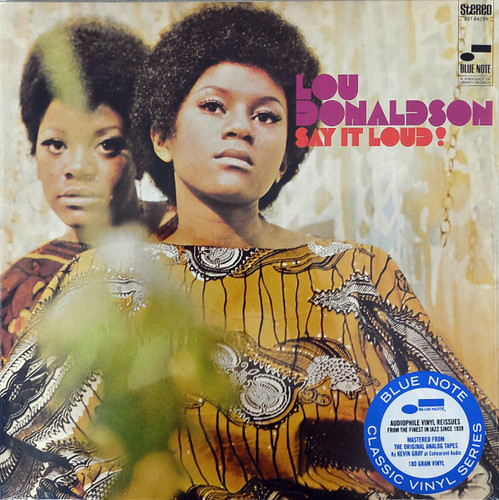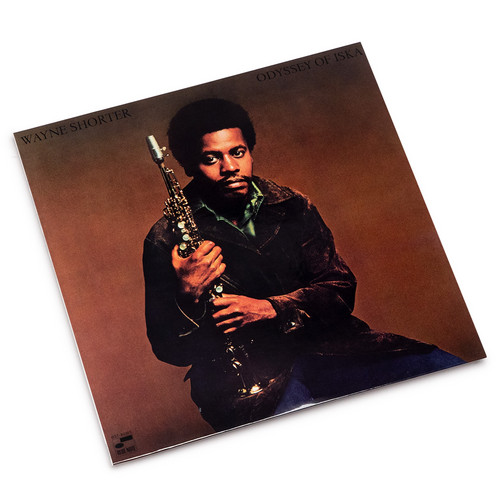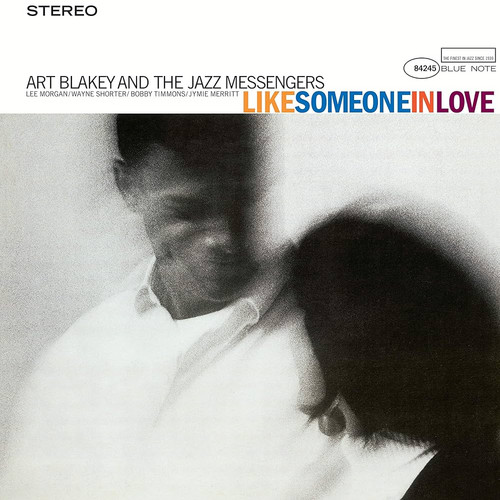★Blue Note
Flight to Jordan
Flight To Jordan is a celebrated hard bop album by Duke Jordan, recorded at Van Gelder Studio in 1960 and released on Blue Note in 1961. Featuring a quintet of Duke Jordan (piano), Dizzy Reece (trumpet), Stanley Turrentine (tenor saxophone), Reggie Workman (bass), and Art Taylor (drums), the album stands out for its memorable melodies and dynamic interplay. With compositions reflecting Jordan’s lyricism and Bud Powell-influenced rhythmic sense, tracks like “Flight to Jordan,” “Star Brite,” and “…
Portrait of Sheila
Portrait Of Sheila is the legendary 1962 debut album by Sheila Jordan, recognized as one of the only vocal jazz albums released by Blue Note in the 1960s. Backed by Barry Galbraith (guitar), Steve Swallow (bass), and Denzil Best (drums), Jordan’s inimitable approach includes stark, intimate renditions of standards, including a celebrated voice-bass duet on Bobby Timmons’ “Dat Dere.” The album’s new Tone Poet Series reissue, shipping in late 2025, brings her singular artistry to new audiences wit…
By All Means
By All Means is the new album from Aaron Parks due for release on November 7, 2025 via Blue Note Records, expanding the acclaimed Parks-Street-Hart jazz trio into a luminous acoustic quartet with the addition of tenor saxophonist Ben Solomon. This set of seven original compositions explores Parks’ signature mix of modern jazz innovation and tradition, highlighted by tender dedications to his wife and son and the sly, swinging lead track “Parks Lope”.
Green Is Beautiful
Green Is Beautiful by Grant Green is a lively jazz-funk album recorded in 1970 at Van Gelder Studio and released on the Blue Note label. Marking a shift from his hard bop and soul jazz roots, Green embraces energetic funk grooves, supported by a stellar lineup including Blue Mitchell, Claude Bartee, Jimmy Lewis, Idris Muhammad, and organists Neal Creque and Emmanuel Riggins. The album’s five tracks, including covers of James Brown and The Beatles, showcase Green’s distinctive, melodic approach a…
Montara
Celebrated vibraphonist Bobby Hutcherson, one of the most distinctive voices in modern jazz, presents Montara, a radiant album that blends Latin rhythms, soulful grooves, and his signature melodic brilliance. Released on Blue Note Records, this project captures Hutcherson at a creative high point, bringing together an ensemble of master musicians to craft a sound both deeply rooted in jazz tradition and vibrantly global in spirit.
On Montara, Hutcherson steps into a more expansive vision than …
The Soothsayer
Blue Note Records proudly presents the reissue of Wayne Shorter’s legendary album, The Soothsayer—a vital chapter in the evolution of modern jazz and a showcase of Shorter’s compositional brilliance. Though recorded on March 4, 1965, at the iconic Van Gelder Studio, this remarkable session was not released until 1979, transforming it into one of jazz’s most revered hidden gems.
Upon its eventual release, critics hailed The Soothsayer as “hard-driving and as edgy as the time at which it was made,…
The Procrastinator
Blue Note Records is proud to spotlight one of jazz trumpet legend Lee Morgan’s most exhilarating works, "The Procrastinator." Originally recorded in 1967 but first released posthumously in 1978, "The Procrastinator" captures Morgan at the height of his creative powers, leading an all-star sextet that reads like a who’s who of modern jazz: Wayne Shorter (tenor saxophone), Bobby Hutcherson (vibraphone), Herbie Hancock (piano), Ron Carter (bass), and Billy Higgins (drums).
Crafted during Morgan’s …
Extensions
"Languishing off-catalogue for many years, McCoy Tyner's Extensions may be the pianist's most unjustly neglected album. Strange days, for not only is the music ineffably vibrant, but Extensions is the only recording ever to feature Tyner alongside pianist and harpist Alice Coltrane, who replaced him in saxophonist John Coltrane's group in 1966. The album has one foot in the echoes of John Coltrane's "classic quartet," of which Tyner was a member from 1960-65, and the other in the astral jazz sty…
Night Dreamer
“Night Dreamer is an album that finds Wayne Shorter in a state of transition as he was still rooted in the hard bop style that started his career, but also starting to lean toward the more abstract style that will serve for the greater part of his remaining career. It’s a talented, and somewhat unusual ensemble that Shorter has assembled here. McCoy Tyner and Elvin Jones, at that time, were mostly known for their famous work with Coltrane, but in 1964, when this album was recorded, Tyner and Jon…
Fuchsia Swing Song
"One of the greatest modern moments on Blue Note – ever! From the cover, to the compositions, to the playing on the set – the whole album crackles with an unbelievable fire that was hardly ever matched again. A young Sam Rivers leads a quartet that includes Jaki Byard on piano, Ron Carter on bass, and Anthony Williams on drums – coming together in a sound that's got lots of sharp edges, yet which also beats with an undeniably swinging heart. Rivers blows incredibly on the session – held in check…
Schizophrenia
"Wayne Shorter’s Schizophrenia found the legendary saxophonist at the pinnacle of post-bop with a sextet of like-minded musical explorers including James Spaulding, Curtis Fuller, Herbie Hancock, Ron Carter & Joe Chambers performing Shorter originals like ‘Tom Thumb’, ‘Go’, and ‘Miyako’. Recorded on March 10, 1967, at Van Gelder Studios, Englewood Cliffs, New Jersey." - HHV
Poly-Currents (Blue Note Tone Poet Series)
After his six years with the seminal John Coltrane Quartet, the master drummer Elvin Jones signed with Blue Note in 1968 and began building his own career as a bandleader. His first two albums for the label were spare trio outings—Puttin’ It Together and The Ultimate—both featuring saxophonist Joe Farrell and bassist Jimmy Garrison. For his next album—1969’s unfettered post-bop exploration Poly-Currents—Jones expanded his ensemble with additional woodwinds and percussion while still maintaining …
Where Is Brooklyn?
Where Is Brooklyn? by Don Cherry returns as a Japanese UHQ-CD, featuring Pharoah Sanders, Henry Grimes, and Ed Blackwell. This classic Blue Note session is remastered for superior fidelity, capturing the spirit of avant-garde jazz with exceptional clarity.
Serenade To A Soul Sister
Horace Silver had been delivering hard bop classics for over a decade when he moved into more groovy territory in the late-’60s on albums including Serenade to a Soul Sisterfeaturing two different quintets performing a set of Silver originals from the high-octane ‘Psychedelic Sally’ to the groove waltz title track to the tender ballad ‘Next Time I Fall In Love’. This Blue Note Classic Vinyl Edition is stereo, all-analog, mastered by Kevin Gray from the original master tapes, and pressed on 180g …
Blue Train: The Complete Masters
2025 stock To mark the 65th anniversary of the album’s recording, Blue Train will be released in two special editions on September 16 as part of Blue Note’s acclaimed Tone Poet Audiophile Vinyl Reissue Series. A 1-LP mono pressing of the original album will be presented in a deluxe gatefold tip-on jacket, while the 2-LP stereo collection Blue Train: The Complete Masters will include a second disc featuring seven alternate and incomplete takes, none of which have been released previously on vinyl…
Say It Loud!
Lou Donaldson had been a Blue Note stalwart since his earliest recordings in 1952 and over the following 15 years produced numerous classic dates spanning bebop, hard bop, and soul jazz. But when the alto saxophonist hooked up with the funky drummer Leo Morris (aka Idris Muhammad) for 1967’s Alligator Bogaloo it began a run of great groove-oriented albums including Mr. Shing-A-Ling, Midnight Creeper, and 1968’s Say It Loud. Filling out the band were Donaldson’s fellow Blue Note labelmate trumpet…
Street Lady
Donald Byrd was an American jazz and rhythm & blues trumpeter, vocalist, composer and bandleader. In his early career he was one of the few hard bop musicians exploring funk and soul while remaining true to his jazz roots. His 1973 album Street Lady was produced by Larry Mizell and contains the classic jazz-funk tracks "Lansana's Priestress" and "Street Lady". Personnel playing on the album include Fonce Mizell (Larry's brother) on clavinet, trumpet, vocals and Harvey Mason on drums. Some of the…
Unit Structures
The intrepid free jazz pianist Cecil Taylor produced some of his best work for Blue Note Records, including his explosive 1966 label debut Unit Structures featuring Eddie Gale on trumpet, Jimmy Lyons on alto saxophone, Ken McIntyre on alto saxophone, oboe, and bass clarinet, Henry Grimes and Alan Silva on bass, and Andrew Cyrille on drums. Over the course of four extended original pieces by Taylor—“Steps,” “Enter, Evening,” “Unit Structure/As Of A Now/Section,” and “Tales (8 Whisps)—the band sca…
Odyssey Of Iska
The winds of change were blowing through Wayne Shorter’s life and career in 1970. The saxophonist had just left Miles Davis’ group and was soon to form his collective fusion band Weather Report. His music was evolving too as he began to delve into his own unique fusion explorations on his previous two Blue Note recordings Super Nova and Moto Grosso Feio. Recorded in August 1970, the mesmerizing Odyssey of Iska would be the last release of Shorter’s early Blue Note period. The album was a tribute…
Like Someone In Love
One of the greatest line-ups of drummer Art Blakey’s hard bop finishing school The Jazz Messengers locked into place in 1960 when tenor saxophonist Wayne Shorter joined trumpeter Lee Morgan, pianist Bobby Timmons, and bassist Jymie Merritt for the recording of The Big Beat, an album that signaled the transformation of the band into a modern jazz juggernaut. In August of that year The Jazz Messengers returned to Van Gelder Studio twice for sessions that would yield the companion albums A Night In…
